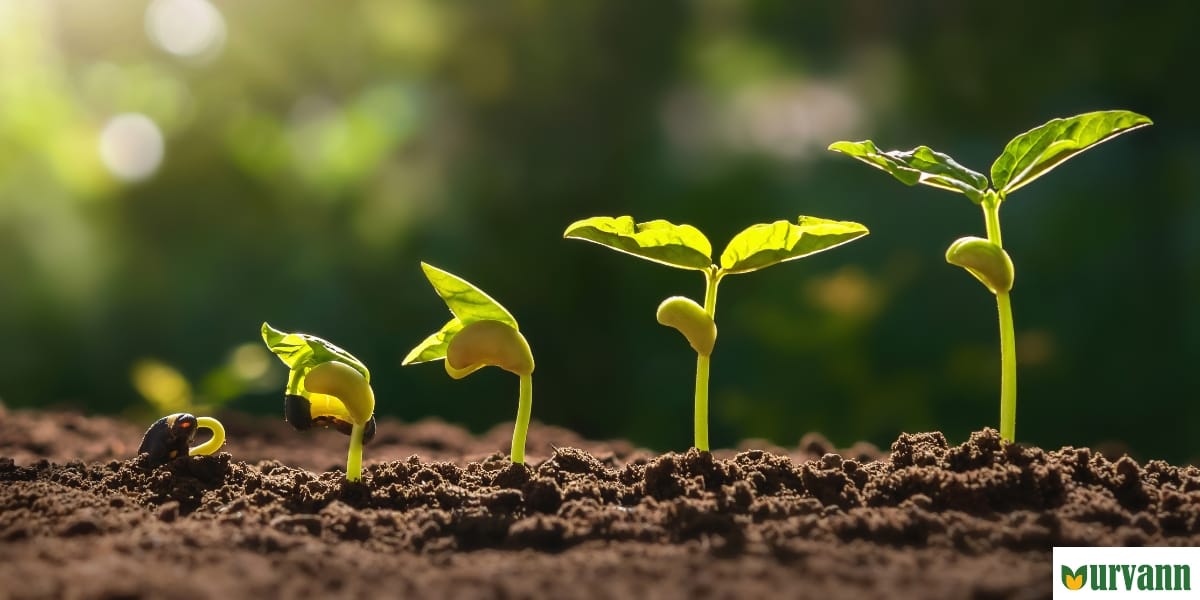Nothing in life is present as it is; everything must go through a journey or an adventure, and everything has a past.
The plants you see carry a whole journey behind them, from being a seed to beautifully transforming into a sapling. You must take advantage of this adventure. Keep reading to discover the journey of a bit of seed to becoming a beautiful sapling, which eventually reaches your home and stays with you until it grows further.
A plant is any living organism that sprouts from a seed and grows on the earth. Many leaves protrude from the stems and branches of the plant. In addition to their usefulness in nature, flowers and fruits are another feature of plants. Additionally, the plant has roots to draw water and other minerals from the earth. A plant makes numerous contributions to the natural world. It provides all living things with oxygen. A plant maintains a tidy and lovely atmosphere. Animals and people can obtain fruits, flowers, and green leaves from plants.
How do Plants Grow?
After germination, the embryo sprouts into tiny leaves, roots, and a stem. The roots then start to spread throughout the soil, causing the plant to expand. Plants use photosynthesis to produce their own sustenance. In addition, plants grow in lakes, rivers, seas, ponds, and oceans.
The roots absorb water and minerals, causing the stem to expand. With the assistance of the sun, the stem grows in branches, from which emerge green leaves. Sunlight, water, minerals, and food are the five elements that plants require to flourish. The plant eventually reaches its maximum height as its fruits and blooms grow.
The Photosynthesis Process
Photosynthesis is the process by which plants produce their food. To create food, plants need sunlight. They absorb carbon dioxide and expel it into the atmosphere. Animals and humans use oxygen to breathe. We refer to this entire process as the process of photosynthesis.
How does Photosynthesis Support the Growth of Trees?
Trees, flowers, and other plants perform the process of photosynthesis in forests, allowing them to flourish. To survive, they must absorb and store light energy in their leaves. Through their roots, trees absorb water that contains nutrients from the soil. Through their leaves, they also take in water from mist and rain. They absorb carbon dioxide from the atmosphere and utilise it to transform light energy into glucose, a type of sustenance that allows them to multiply. They release oxygen during this process.
Let us Look at the Process More Closely:
Step 1: Seeds
A seed is a plant's embryo sown underground. Germination is another name for the process of seed development. Through germination, the embryo grows into tiny stems, roots, and leaves with the aid of soil and water. The procedure results in the embryo's sprouting, the initial stage of a plant's growth.
When a seed gets warm and wet, its skin splits and the seed expands. A small root anchors the seed by growing downward and absorbing water and minerals from the earth. Concurrently, a shoot ascends in the direction of the light. The most minor portion of the seed, the embryo, is where both the root and the shoot originate.
Were you aware? Plants must disperse their seeds to live. Water, wind, and animals all spread seeds. Animals such as birds only break down the fleshy portions of berries when they swallow them whole. The seeds expire in their droppings, unscathed.
Step 2: Stem
This is the first time you'll notice a couple of leaves and maybe a stem. Many factors could prevent the sprout from growing, such as excessive or insufficient water, excessive sun exposure, fire, or being consumed by insects or animals.
Step 3: Sapling
The following stage is the sapling stage, during which the sprout is still growing and has not yet reached full maturity. The sapling is too little to be considered a fully grown, mature tree. The transition from a kid to an adolescent resembles the sapling period. Although saplings grow swiftly, they have yet to procreate or generate seeds.
This sapling is what then moves on to grow into enormous trees.
Conclusion
Thus, we see how nature has its growth trajectory. Plants are considered living organisms because they react to and are affected by the environment. Taking care of the most minor things while tending to plants is crucial. Just know that it takes all of it, from heat to rain to pruning to being buried in soil, for a plant to grow healthy; this makes its journey worth it.
Happy Planting!


0 Comment